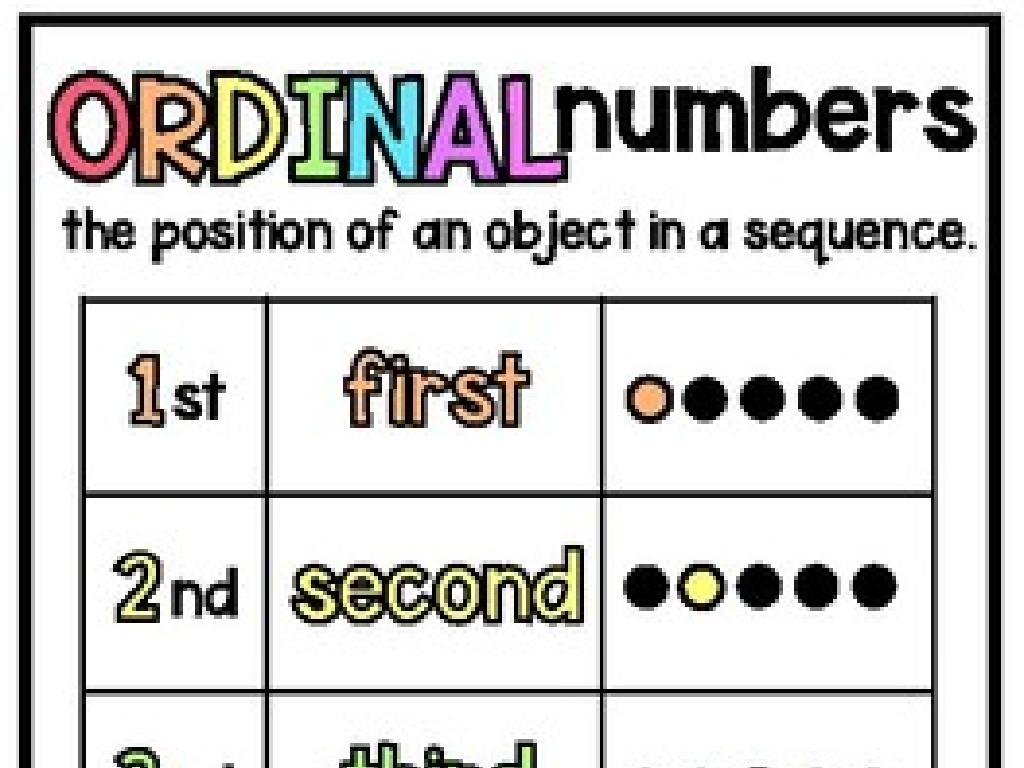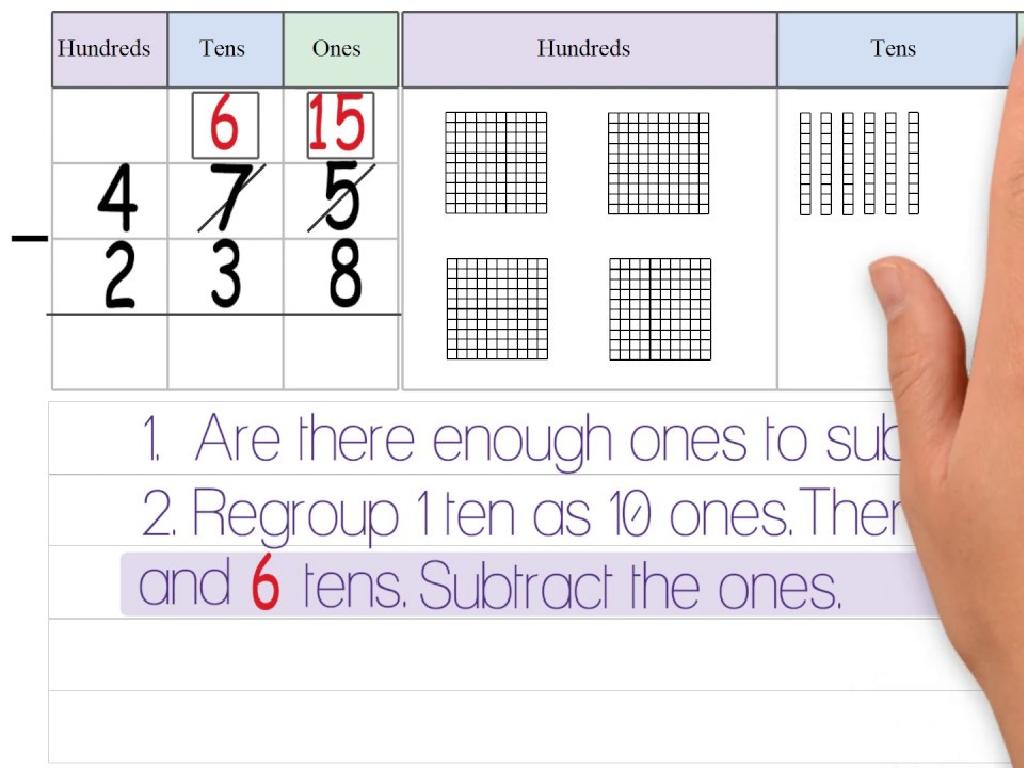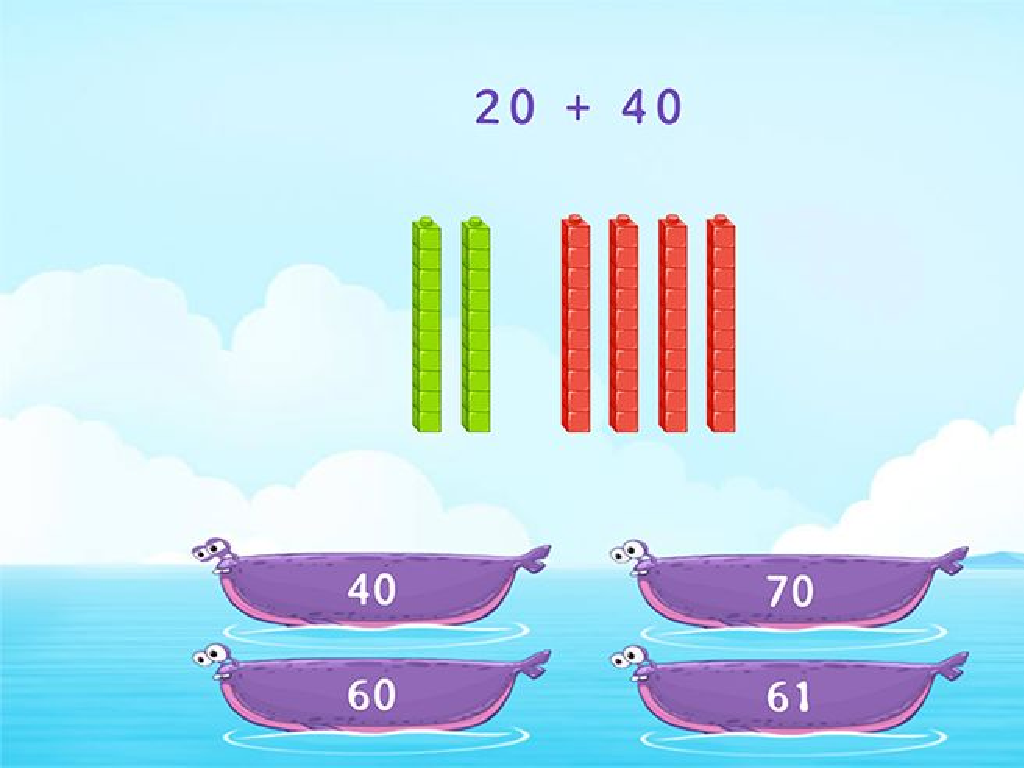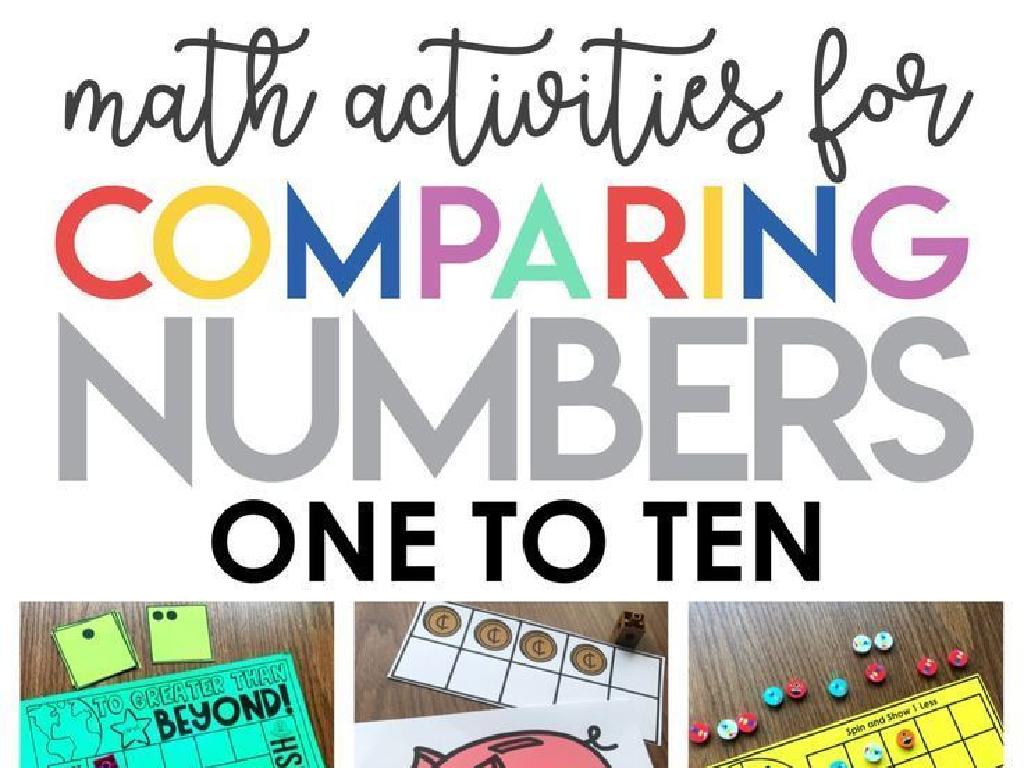Apply Addition And Subtraction Rules
Subject: Math
Grade: Seventh grade
Topic: Operations With Rational Numbers
Please LOG IN to download the presentation. Access is available to registered users only.
View More Content
Applying Addition and Subtraction Rules
– Define rational numbers
– Numbers that can be expressed as a fraction a/b, where a and b are integers and b is not zero.
– Rules for adding and subtracting
– Same denominators: add/subtract numerators. Different denominators: find a common denominator.
– Real-life rational number use
– Money, measurements, and time often involve rational numbers in daily life.
– Practice with examples
|
This slide introduces students to the concept of rational numbers and how to perform addition and subtraction operations with them. Start by defining rational numbers and ensure students understand that they include integers, fractions, and decimals that can be expressed as fractions. Explain the rules for adding and subtracting rational numbers, emphasizing the need for a common denominator when the denominators are different. Provide real-life examples where rational numbers are used, such as in financial transactions, cooking measurements, or time calculations. Conclude with practice problems to apply these concepts, ensuring students are comfortable with the operations before moving on to more complex problems.
Exploring Rational Numbers
– Define rational numbers
– A number that can be expressed as a fraction a/b, where a and b are integers and b is not zero.
– Examples vs. non-examples
– Examples: 1/2, 0.75; Non-examples: 2, À
– Place numbers on a number line
– Visualize the position of fractions and decimals between integers.
– Practice with addition & subtraction
|
This slide introduces the concept of rational numbers, which are any numbers that can be expressed as a fraction with integers in the numerator and denominator, and the denominator is not zero. Provide clear examples of rational numbers, such as common fractions and decimals, and contrast them with non-examples like irrational numbers. Demonstrate how to place these numbers on a number line, which helps in visualizing their order and magnitude. Emphasize the importance of understanding the placement for future topics like addition and subtraction of rational numbers. Encourage students to think of their own examples and practice placing them on a number line to solidify their understanding.
Addition with Rational Numbers
– Rules for adding rational numbers
– When adding, same signs sum, diff signs subtract
– Finding a common denominator
– Look for the least common multiple of the denominators
– Step-by-step fraction addition
– Add numerators, keep the denominator same
– Practice with examples
– Use example: 1/4 + 3/4 and 3/8 + 1/8
|
This slide introduces students to the rules and steps for adding rational numbers, specifically fractions. Start by explaining that when adding two rational numbers with the same sign, we combine their absolute values, and the result takes the common sign. When the signs are different, we subtract the smaller absolute value from the larger one, and the result takes the sign of the larger absolute value. Emphasize the importance of finding a common denominator before adding fractions, which involves finding the least common multiple of the denominators. Walk through the process of adding fractions by aligning the denominators, then combining the numerators. Provide clear examples for the students to follow, and encourage them to solve similar problems for practice.
Subtraction with Rational Numbers
– Rules for subtracting rationals
– Change subtraction to addition and use the opposite of the number being subtracted.
– Maintain common denominators
– Fractions must have the same denominator to subtract.
– Step-by-step fraction subtraction
– Find a common denominator, rewrite fractions, subtract numerators, and simplify.
– Practice with examples
– Example: 3/4 – 1/4 = (3-1)/4 = 2/4 = 1/2
|
This slide introduces the rules for subtracting rational numbers, emphasizing the importance of common denominators. Begin by explaining that subtraction of rational numbers can be transformed into addition by taking the additive inverse of the number to be subtracted. Highlight the necessity of having a common denominator when subtracting fractions, and walk through the process step-by-step: finding a common denominator, rewriting each fraction, subtracting the numerators, and simplifying the result if possible. Provide several examples for the students to practice, ensuring they understand each step. Encourage students to work through problems both individually and in groups to reinforce the concept.
Adding and Subtracting Rational Numbers
– Example problem walkthrough
– Let’s solve 3/4 + 5/8 and 7 – (-2) together
– Strategies for addition & subtraction
– Use number lines, common denominators, and inverse operations
– Show your work
– Write each step to avoid mistakes
– Why showing work matters
– It helps identify errors and understand the problem-solving process
|
This slide is aimed at engaging students in the practical application of addition and subtraction rules for rational numbers. Start by solving example problems as a class to demonstrate the process. Discuss various strategies such as finding common denominators for fractions or using number lines for integers. Emphasize the importance of writing down each step of the work to track the thought process and catch any potential errors. Explain that showing work is crucial not just for getting the correct answer, but also for understanding the underlying concepts and being able to explain the reasoning behind the solution. Encourage students to ask questions and try solving problems on their own to reinforce the concepts.
Solving Word Problems with Rational Numbers
– Interpret word problems carefully
– Understand the problem’s context and what it’s asking for.
– Apply rules to add and subtract
– Use addition or subtraction of fractions, decimals, and integers.
– Methods to verify your solutions
– Check by reversing the operation or using estimation.
– Practice with example problems
– Example: If Sam has $5.25 and spends $2.40, how much does he have left?
|
This slide aims to guide students through the process of solving word problems involving rational numbers. Emphasize the importance of reading the problem thoroughly to understand what is being asked. Students should apply the rules of adding and subtracting fractions, decimals, and integers as appropriate. Encourage them to check their answers by performing the inverse operation or by estimating to see if their answer makes sense. Provide practice problems for students to apply these skills, and discuss different strategies for checking work. This will help them gain confidence in solving word problems and understanding the practical application of rational number operations.
Class Activity: Rational Numbers Relay
– Split into small groups
– Solve addition & subtraction problems
– Each group gets different problems involving rational numbers
– Present solutions to the class
– Explain the reasoning behind answers
– Discuss the steps taken to find the solution
|
This activity is designed to promote teamwork and enhance understanding of addition and subtraction with rational numbers. Divide the class into groups of 3-4 students. Provide each group with a unique set of problems that require adding and subtracting rational numbers. After solving the problems, each group will present their solutions to the class and explain the reasoning behind their answers. This will help students articulate their thought process and reinforce their understanding. For the teacher: Prepare diverse problem sets in advance, ensure they are appropriately challenging, and consider potential misconceptions that may arise during the activity. Be ready to facilitate and guide discussions.
Conclusion & Homework: Mastering Rational Numbers
– Review addition/subtraction rules
– Summarize today’s key points on adding and subtracting rational numbers.
– Complete assigned practice problems
– Solve problems in homework to reinforce understanding.
– Compile questions for next class
– Think of any difficulties faced and ask in the next session.
– Practice makes perfect
|
As we wrap up today’s lesson on adding and subtracting rational numbers, it’s crucial for students to internalize the rules through practice. Assign a set of problems that cover a range of difficulties to ensure thorough understanding. Encourage students to note down any questions or challenges they encounter while doing their homework to be addressed in the next class. This will not only help clarify their doubts but also foster a habit of reflective learning. The homework is designed to cater to different skill levels and includes both straightforward calculations and more complex problems that require careful application of the rules.






